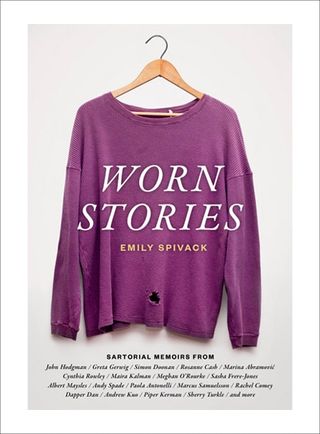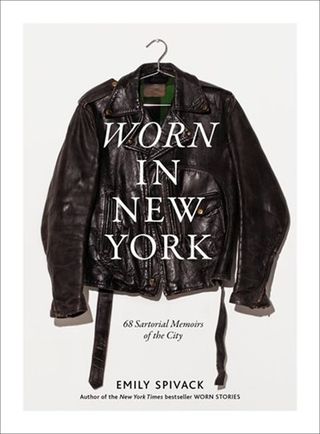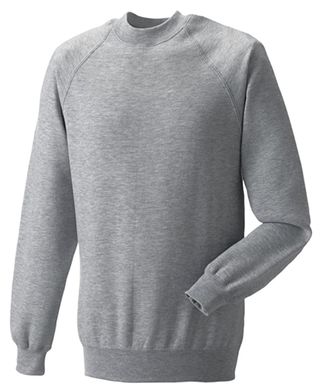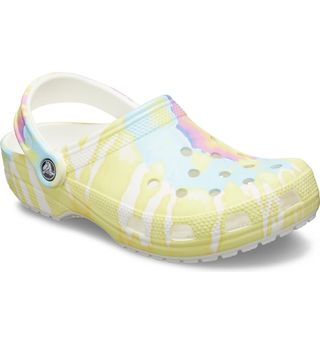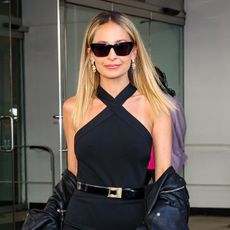Netflix's New Fashion Series Reveals the Stories Behind What We Wear


If the idea of staring into the abyss of your closet doesn’t evoke a profound emotional response, perhaps that’s because it’s too daunting. Take out just one item—a vintage band tee, a special-occasion dress, or even a pair of everyday shoes—and prepare to look at it in a new light with a little help from Netflix’s new documentary series Worn Stories.
Based on the book of the same name by Emily Spivack, an artist, writer, editor, and curator, Worn Stories asks several people—only a few of which will be recognizable to the fashion set—to share the stories behind their favorite piece of clothing. The premise is simple, right? But over the course of eight episodes, I experienced a wide range of emotions. Yes, you’ll laugh, you’ll cry—honestly, you’ll probably cry more than once—and you'll certainly conclude the series with a newfound sense of curiosity about not only other people’s fashion choices but also your own wardrobe.
With so many great real-life characters to choose from, it’s difficult to narrow down a favorite interview or even episode. But I found the worn stories that stuck with me most were those I least expected: Rudy, who purchases his first new shirt after 41 years in prison; Spirit, a nonbinary teenager preparing for their B'nai Mitzvah; Diane and Paul, a nudist couple; and Shoham, whose pursuit of a misplaced Rachel Comey coat reminds us that it's the journey, not the destination.
Produced by Jenji Kohan of Weeds and Orange Is the New Black fame, Worn Stories offers her signature glimpse behind the curtain, finding beauty in the stories of people often overlooked by society. Broken into several distinct themes, each episode is loosely connected by threads—or occasionally, treads—thereby affirming the role fashion plays in how we express ourselves, experience the world, and harness our own main-character energy in moments big and small.
Below, we caught up with Spivack to talk about the latest interpretation of her Worn Stories project, including her favorite interviews as well as what the future holds for fashion lovers in the post-pandemic era.
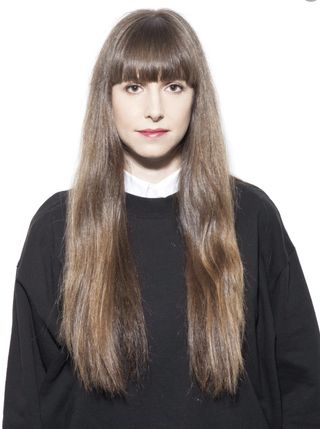
What inspired the original Worn Stories project, and how has it evolved from its inception to the Netflix series?
I can take you back to 2007 when I was on eBay, and I was, at that point, into vintage high heels. I was looking for some vintage high heels, and I found this Playboy bunny costume that had the puffball tail, the stockings, the headband, the heels, the whole thing. The outfit and the heels were not for me, but what accompanied them was an ID card of the woman who had been a Playboy bunny and had worn it. There was something at the moment that really clicked for me—this connection between who she was and the clothes that she was wearing. There was a mystery there for me, and I wanted to know more.
[A few years later,] I did a project called "Sentimental Value," where I was collecting stories I was finding on eBay. When people were selling clothes, they would post about what they did when they were wearing them and why they were getting rid of them. I was noticing this connection on a platform that isn’t meant for storytelling, so I started looking in my own closet and writing some of my own stories to see how that felt and what it felt like to make those kinds of memories a little bit more concrete.
I realized pretty quickly that I was far more interested in other people’s stories than I was in my own, so I started asking friends and family. I loved the stories that they were sharing with me. These were people I had known my whole life, and they were sharing things I had never before heard them tell me, stories I was completely blown away by. I realized at that moment that clothing was this overlooked storytelling device and that it was this access point. We all wear clothing, so it was this universal storytelling device.
As I was gathering those stories, I had an immediate sense that I wanted it to become a book. To hold myself accountable as an artist, I made a website and started posting stories on the site. Worn Stories was published in 2014, and Worn in New York came out in 2017.
What I love about the books is that there’s sort of a mystery. You see the garment, you read the text, and you imagine who the person is who is sharing the story. But there were moments where I wanted more for the reader. I liked that mystery, but I wanted to see the garment and hear the person telling the story. That’s why I wanted to turn it into a TV show—I think that there’s more to share.
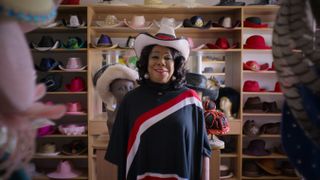
Is there a particular piece from your own closet that tells your story?
I share a couple of stories in both books. In Worn in New York there's a story about a ripped pair of stockings, sort of a wardrobe-malfunction story. In the first book, there’s a story about flip-flops that I’ve had for a million years that remind me of my grandmother and going to the beach with her.
There’s a sweatshirt that I have been wearing lately. It’s a gray, completely non-descript Russel sweatshirt that I think I've had since seventh grade. I used to have sweatpants that went with it, and I remember going to the ice skating rink and taking classes wearing this sweatsuit outfit. I still wear the sweatshirt. Actually, it’s funny because you’d expect it to have gotten holey and raggedy, but it’s in great shape. It was meant to be a knock-around thing, and now it’s still just this basic gray sweatshirt, but I take care of it in a different way because I know that I’ve had it so long and it reminds me of my childhood and growing up.
I also like the inside joke that I’m having. In pre-Covid times, I would go out and wear it with blue leather pants and high heels or something. And no one would know that it was a sweatshirt I've had since I was 12 years old. It must have been huge on me when I was little, and now it kind of has this perfect shape and fits me just so—it’s grown up with me as I’ve grown up.
After a year in quarantine, what are you looking forward to wearing out and about?
I’ve had conversations with my friends about the big blowout parties that we want to have after this is all behind us. I have been dreaming of getting a tailored tuxedo made. I want this beautiful material, perfectly fit tuxedo that just feels like it was made for me and I can wear it to celebrations.
It is my hope with Worn Stories in general, and I think that this may be the case post-pandemic, where we look in our closets and remember when we last wore this and why we want to wear it now. This has been a moment to reprioritize and look at things a little bit differently, so I think we’ll do that with our clothing and our closets.
But I still think that we’ll get dressed up. Once people feel safe, I think people will want to be together and celebrate, and I’ve got that tux in my head.
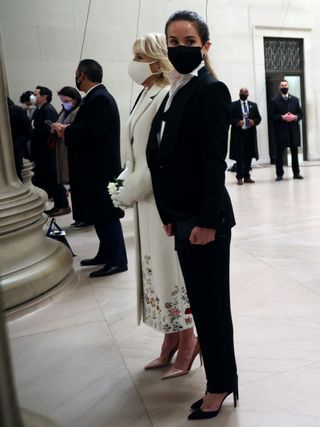
What about Ashley Biden's inauguration tuxedo as inspiration? That was a great look, but that's the only occasion we've had that it's been appropriate for in so long!
I think that’s also why we ate it up, the inauguration and everything, because we're just so hungry for beautiful colors and fabrics. Everyone was wearing such vibrant colors. It felt so good to see that.
[Jill Biden wore] this amazing coat with a lot of needlework that was very beautiful and symbolic. Everything felt very thoughtful. I think that was the other thing about that moment in time. It wasn’t just flashy fashion; everything had some meaning.
There are stories in the show where someone would buy something intentionally for an event, like Tren’ness when she bought the dress to wear to her grandmother’s funeral or Timmy Cappello's codpiece that Tina Turner bought for him to wear on stage.
But then there are other garments like Mrs. Park’s yellow sweater that a Buddhist monk gave her. That’s what she wore and gave her confidence when she would dance with her Korean dance troupe. And when she was given that sweater, it wasn’t the intention.
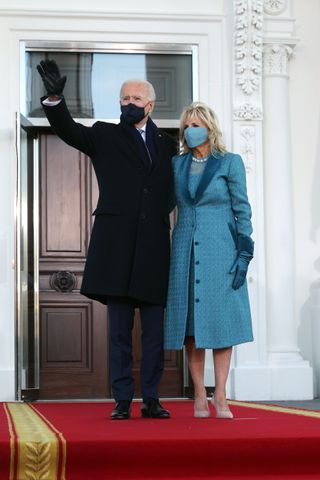
As the curator of Worn Stories in all its capacities, what inspires your selection, or for the more sentimental pieces, how do you translate that value into a story that someone else can appreciate?
It is really important to me in the books and in the show to have a real diversity of stories. I want the stories to reflect who we are, our collective human experience as told through the clothes that we wear, so it’s really critical to feature a range of ages and backgrounds from different parts of the country and different types of clothing.
I want this to be a show that everyone feels like they’re going to get something out of it. We all wear clothing. They will watch it, and they will respond to an article of clothing, a theme, a character in it. I think there’s really something for everyone in the show.
Yes, everyone wears clothes. Well, almost everyone. I love that you included a nudist couple in the documentary. How did that come about?
They have made a decision to not wear clothing, and there’s something to be said for that, so it was very intentional to incorporate their story into the mix. It sets the stage to start thinking about what we’re saying through the clothes we wear and the clothes that we deliberately decide not to wear. What are we communicating with our clothes or when we’re not wearing clothing?

Is there a celebrity or public persona that you didn't speak with but would like to interview in the future about a specific or iconic look?
One person who I always wanted to speak with, and I am sad that I didn’t have the opportunity to, is Bill Cunningham. He would ride around on his bike wearing that blue jacket. And I always wanted to talk to him about that. When he passed away, I was obviously sad that he had passed away because of his contributions and also because I’d never be able to ask him about his blue jacket. That’s someone who I wish I was able to speak to.
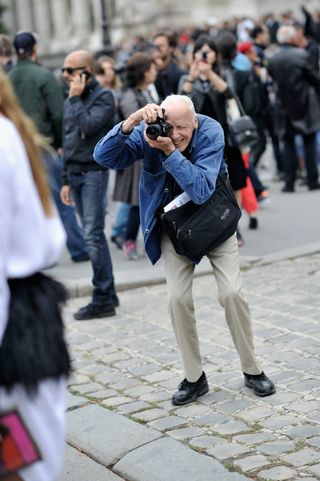
And the jacket, I've read about it. It's very utilitarian and brandless, but he made it iconic.
Yes, and he made it his uniform. There’s an episode in the show about uniforms, and he would have been so amazing in it. There’s the woman who is the Met guard and the crossing guard. There are also people who have made their uniforms for themselves—they have said, This is who I am. I am going to represent myself through all of my hats. For Bill Cunningham, his blue jacket became his signature. And yeah, it was a French workman’s coat, but he wore it for the utility of it.
What do you hope readers and viewers take away from Worn Stories and your approach to looking at fashion through a critical lens?
Some of the key feelings for me are that clothing is so much more than the things we cover ourselves with. Our clothing is really steeped in story and memory, and these stories taken all together in Worn Stories are a way to capture our collective human experience and this sense of commonality. We all wear clothing, and things happen to us while we’re wearing those clothes. This show is a way to share those stories and the human connection that we have.
Hopefully, at the next gathering where we can all be together, people are sitting around sharing their own stories. I hope it takes on a life of its own!
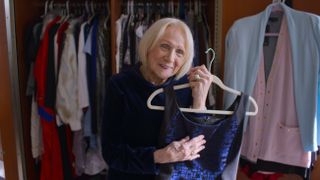
Up next: Vintage Fashion Lovers, Rejoice: Netflix's Firefly Lane Is a Blast From the Past

Drew Elovitz is originally from Pittsburgh, Pennsylvania, but has spent the last decade living and working in New York City. She earned a master's degree in media and popular culture from New York University, then began her career on the internet as the Twitter voice of Barbie. She worked previously at Who What Wear as the director of content strategy and also spent several years leading the social media teams at Teen Vogue and Entertainment Weekly. You'll find her byline on the site around topics such as celebrity fashion, must-have basics, beauty favorites (particularly nail polish), and wellness tips and tricks. Her personal style tends to favor the classics: She loves crisp white button-downs, sneakers, and skinny jeans—and no look is complete without a great pair of oversize sunglasses and a trusty leather jacket. After she finishes reading the entire internet every day, she can be found dining out at her favorite restaurants, trying new beauty treatments, or indulging her historical-fiction habit.
-
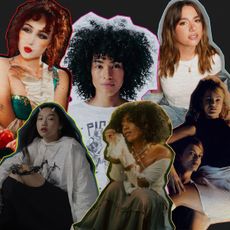 Our 2024 "Ones to Watch in Music" List Is Here!
Our 2024 "Ones to Watch in Music" List Is Here!Time to refresh your playlists.
By Jessica Baker
-
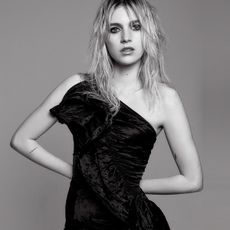 Nell Tiger Free Is This Generation's Scream Queen
Nell Tiger Free Is This Generation's Scream QueenFrom Servant to The First Omen, the actor has found her sweet spot in the horror genre.
By Jessica Baker
-
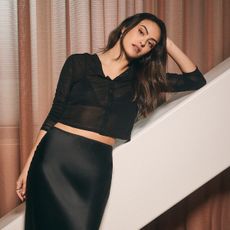 Camila Mendes Is Getting Back to Her Roots
Camila Mendes Is Getting Back to Her RootsStarting with her new film, Música.
By Jessica Baker
-
 The Transformation of Sydney Sweeney
The Transformation of Sydney SweeneyYou've never seen the 26-year-old quite like this.
By Eliza Huber
-
 Celeste O'Connor Wants to Play Dress-Up All the Time
Celeste O'Connor Wants to Play Dress-Up All the TimeThe Ghostbusters: Frozen Empire actor knows how to serve a carpet look.
By Jessica Baker
-
 Mckenna Grace Channels Old Hollywood Glamour for Ghostbusters Premiere
Mckenna Grace Channels Old Hollywood Glamour for Ghostbusters PremiereGo behind the scenes of her crimson look.
By Jessica Baker
-
 Kristen Stewart Is Calling the Shots
Kristen Stewart Is Calling the ShotsThe Love Lies Bleeding star joins fellow actor-turned-director Riley Keough in conversation.
By Jessica Baker
-
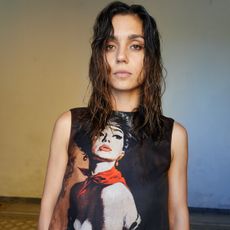 This IWD, Cristiana Dell'Anna Brings the Story of Cabrini to the Forefront
This IWD, Cristiana Dell'Anna Brings the Story of Cabrini to the ForefrontBy Jessica Baker
